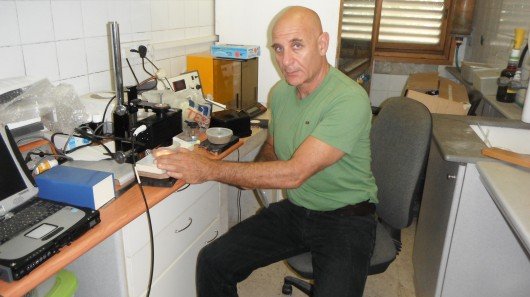Detect pollutants in the environment, on location and in real time.
When any two compounds are combined, the resulting chemical reaction shows up as a specific color when natural sunlight reflects off the area where that reaction is occurring. Therefore, by assessing the colors of an object, material or environment, it is possible to determine what compounds are present within it. Unfortunately, many of those colors fall outside the mere three bands of light (red, green and blue) visible to the human eye. Spectral analysis equipment can detect a much wider range of light, but it is typically located in labs, which samples must be transported to. Now, however, a scientist from Israel’s Tel Aviv University (TAU) has created a portable hyperspectral sensor, that can “see” over 1,000 colors – this means that it could be used to detect pollutants in the environment, on location and in real time.
The small sensor is reportedly capable of processing 300 times more information than the human brain can process, and it can do so from a wide variety of distances. According to its inventor, Professor Eyal Ben-Dor, it can read light reflected anywhere from half an inch to 500 miles (805 km) away. This means that it could be operated not only on the ground, but also in unmanned aircraft, satellites or weather balloons. It could conceivably even be linked to a telescope, so astronomers could use it to determine the content of another planet’s atmosphere.
Primarily, however, Ben-Dor envisions it being used to survey environments on land and at sea, to identify any pollutants that might be present. In particular, he sees it being used around gas pipelines, in agricultural areas, and at marinas – basically, any place where environmental contamination could be taking place.
Read more . . .
Bookmark this page for “pollution detection sensor” and check back regularly as these articles update on a very frequent basis. The view is set to “news”. Try clicking on “video” and “2” for more articles.








